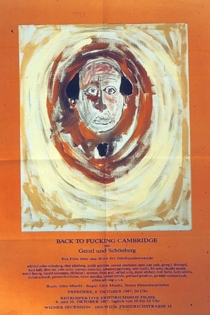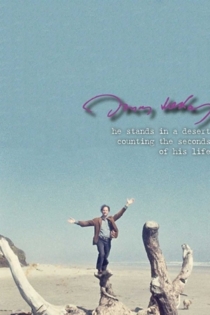
Nam June Paik
1932 - 2006Bye Bye Kipling
Nam June Paik
Dick Cavett, Ryuichi Sakamoto
This ambitious live satellite link-up of Japan, Korea and the United States features interviews with Keith Haring and architect Arata Isozaki, and performances and works by Philip Glass and the Kodo Drummers, Charlotte Moorman, Nam June Paik, and Lou Reed. In an extraordinary section, a performance in Japan of classical Western music is accompanied by a group of Kabuki dancers.
Bye Bye Kipling

George
Jeffrey Perkins
Yōko Ono, Jonas Mekas
In 1961 Lithuanian American artist and impresario George Maciunas established the avant-garde art movement Fluxus. George details the rise of Fluxus following a sensationalized tour of “concerts” in Europe in 1962, and continuing in New York for most of the 1960s and ’70s. During this time Maciunas was converting the dying industrial buildings of Soho into a network of artists’ lofts, creating one of the first official real estate co-ops of artist-owned buildings. Maciunas’s life and legacy—as recounted by artists of his generation, including Yoko Ono and Jonas Mekas—ignited debates that remain pivotal to artists working today.
George: The Story of George Maciunas and Fluxus
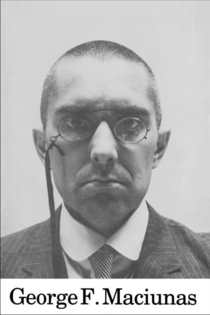
As I Was Moving Ahead Occasionally I Saw Brief Glimpses of Beauty
Jonas Mekas
Jonas Mekas, Stan Brakhage
A compilation of over 30 years of private home movie footage shot by Lithuanian-American avant-garde director Jonas Mekas, assembled by Mekas "purely by chance", without concern for chronological order.
As I Was Moving Ahead Occasionally I Saw Brief Glimpses of Beauty
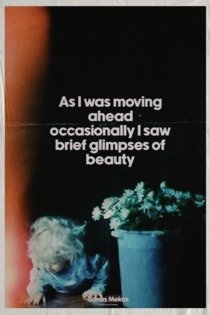
Fluxfilm Anthology 1962-1970
Mike Parr, Owen Land
Feature-length compilation program presenting 37 out of 41 original fluxfilms produced and directed in the 1960s by Fluxus artists, including George Maciunas, Nam June Paik, Yoko Ono, Robert Watts, Paul Sharits, et al.
Fluxfilm Anthology 1962-1970
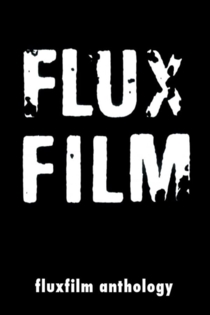
Kill Your TV: Jim Moir’s Weird World of Video Art
Sebastian Barfield
Vic Reeves, Isaac Julien
Jim Moir (aka Vic Reeves) explores Video Art, revealing how different generations ‘hacked’ the tools of television to pioneer new ways of creating art that can be beautiful, bewildering and wildly experimental.
Kill Your TV: Jim Moir’s Weird World of Video Art

Global Groove
John Godfrey, Nam June Paik
John Cage, Russell Connor
Global Groove was a collaborative piece by Nam June Paik and John Godfrey. Paik, amongst other artists who shared the same vision in the 1960s, saw the potential in the television beyond it being a one-sided medium to present programs and commercials. Instead, he saw it more as a place to facilitate a free flow of information exchange. He wanted to strip away the limitations from copyright system and network restrictions and bring in a new TV culture where information could be accessed inexpensively and conveniently. The full length of the piece ran 28 minutes and was first broadcasted in January 30, 1974 on WNET.
Global Groove

Guadalcanal Requiem
Nam June Paik
Charlotte Moorman
One of Paik’s most overtly political and poignant statements, Guadalcanal Requiem is a performance/documentary collage that confronts history, time, cultural memory and mythology on the site of one of World War II’s most devastating battles.
Guadalcanal Requiem

‘Rameau’s Nephew’ by Diderot (Thanx to Dennis Young) by Wilma Schoen
Michael Snow
Kevin Wenzel, Munro Ferguson
Described (rather cheekily) by director Michael Snow as a musical comedy, this deft probing of sound/image relationships is one of his wittiest, most entertaining and philosophically stimulating films. In his words, the film “derives its form and the nature of its possible effects from its being built from the inside, as it were, with the actual units of such a film, i.e. the frame and the recorded syllable. Thus its ‘dramatic’ element derives not only from a representation of what may involve us generally in life but from considerations of the nature of recorded speech in relation to moving light-images of people.’”
‘Rameau’s Nephew’ by Diderot (Thanx to Dennis Young) by Wilma Schoen
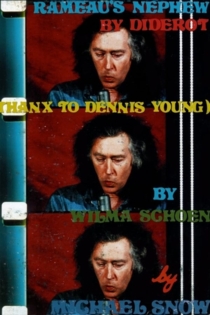
Waiting for Commercials
Jud Yalkut, Nam June Paik
Part of a restored collection of rare early works by Nam June Paik, Waiting for Commercials is a hilarious compendium of Japanese TV commercials. This early example of Paik's use of appropriated television imagery as pop cultural artifact was originally created for a performance piece of the same name, which featured Charlotte Moorman and her cello.
Waiting for Commercials

"Topless Cellist" Charlotte Moorman
Howard Weinberg, Nam June Paik
Charlie Morrow, Yōko Ono
Nam June Paik's first single-channel videotape since 1989 is a heartfelt tribute to his long-time collaborator Charlotte Moorman. This portrait traces Moorman's career as an avant-garde performer, from her classical training to her notorious arrest as the "Topless Cellist" and subsequent talk-show celebrity. Rare documentations of Moorman's performances include Otto Piene's Sky Kiss and Jim McWilliams' Chocolate Cello. Interviews with Moorman's friends, family and collaborators, such as Yoko Ono, Christo and Jeanne Claude, Otto Piene, and Barbara Moore, among others, provide intimate recollections of the inimitable Moorman.
"Topless Cellist" Charlotte Moorman
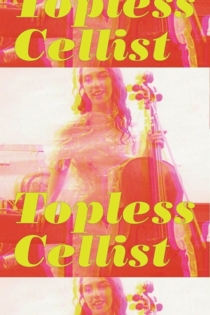
Beatles Electroniques
Jud Yalkut, Nam June Paik
Part of a collection of restored early works by Nam June Paik, the haunting Beatles Electronique reveals Paik's engagement with manipulation of pop icons and electronic images. Snippets of footage from A Hard Day's Night are countered with Paik's early electronic processing.
Beatles Electroniques
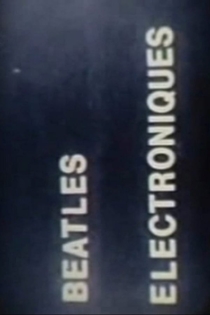
Suite 212
Nam June Paik
Russell Connor, Charlotte Moorman
Suite 212 is Paik's "personal New York sketchbook," an electronic collage that presents multiple perspectives of New York's media landscape as a fragmented tour of the city. Paik critiques the selling of New York by multinational corporations and the city's role as the master of the media and information industries; Collaborators Yalkut, Davis and Kubota contribute their own vibrant and punchy segments.
Suite 212

Electronic Fables
Jud Yalkut, Nam June Paik
Part of a restored collection of rare early works by Nam June Paik, Electronic Fables is an example of Paik's early improvisations and experiments with electronic image manipulation, prior to his invention of the Paik/Abe Video Synthesizer. This piece also makes use of anecdotes by John Cage and other influential artists and cultural figures.
Electronic Fables

Zen for Film
Nam June Paik
In an endless loop, unexposed film runs through the projector. The resulting projected image shows a surface illuminated by a bright light, occasionally altered by the appearance of scratches and dust particles in the surface of the damaged film material. This a film which depicts only its own material qualities; An "anti-film", meant to encourage viewers to focus on the lack of concrete images.
Zen for Film

Back to Fucking Cambridge
Terese Panoutsopoulos
Theo Altenberg, Otto Muehl
About a group of graduates from Cambridge University who go back to their college to visit a friend who has stayed on there. Otto Muehl founded a community of artists in Vienna in 1970 with the aim of exploring a completely free life practice. Since 1972, this society experiment at the Friedrichshof in Burgenland, 60 kilometers from Vienna, further developed. From the mid-1970s, other municipalities were founded in 30 European cities. At Friedrichshof itself lived at times up to 240 members and visitors.
Back to Fucking Cambridge
